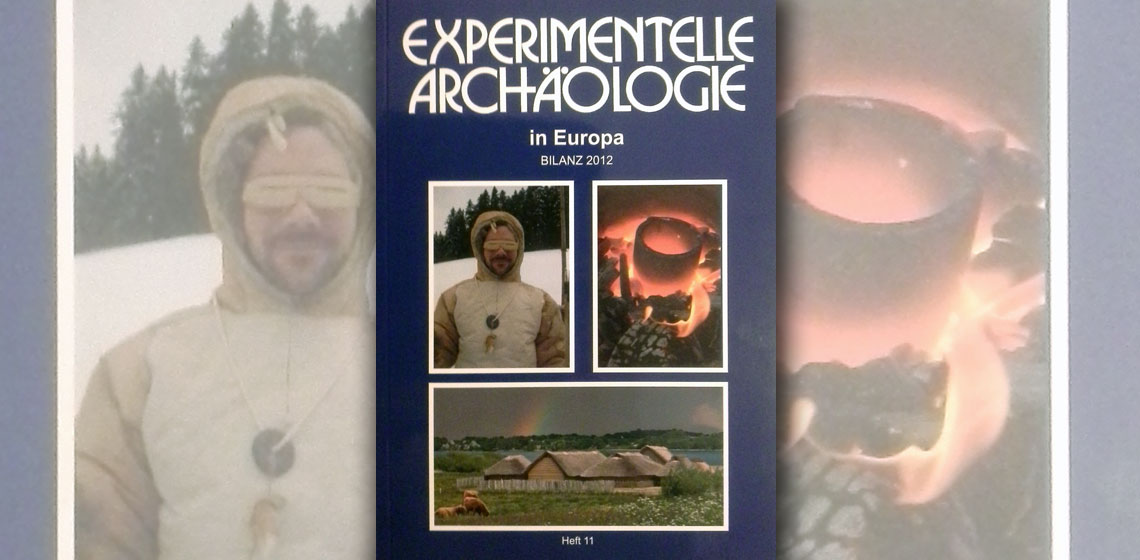
According to James Mathieu in 2002, experimental archaeology is “A subfield of archaeological research which employs a number of different methods, techniques, analyses and approaches within the context of a controllable imitative experiment to replicate past phenomena (from objects to systems) in order to generate and test hypotheses to provide or enhance analogies for archaeological interpretation”. This is still a valid definition, though one can see a rise for a “new kind” of experimental archaeology. One where craftspeople combine their knowledge and skills with archaeologists, where there is a more humanistic touch. This allows for finding anomalies which can change our ideas of the past through experience and it also allows for a greater co-operation between academics and open-air centers just as EXARC is doing.
First of all, let us look at the book on its own. The book has a glossy, high quality paperback cover with 2 high resolution pictures on it with three examples of experimental archaeology: a man wearing a reconstruction of an arctic like suit with snow glasses, a crucible in a fire and a reconstruction of a small town. Inside the book we find a wide range of articles separated into three different groups: “Experiments and Attempt”, “Reconstructive Archaeology” and “Mediation and Theory”. Do note that all but two articles are in German; even though they are well understandable for non-native speakers, you might need to do some translations. Most of the articles are 10-15 pages long and usually contain high quality, full color images. Even without reading the book, one can instantly see that a lot of effort went into it and that it is of a high quality.
Experiments and Attempt
The experiments that are discussed here are very different in subject and range, from very specific times and places to “primeval times”, making one wonder about the academic value of the latter. But once you start reading, you realise quickly that it consists of very well documented and thought out experiments that in fact do cover the vast majority of the “primeval times”. Backing his experiments up with elaborate photos and tables explaining the results, Markus Klek takes us deeper into the possible decisions people made when choosing between awls and needles. A more specific subject is discussed in the article about cooking experiments with Ertebølle vessels in combination with hard water. This experiment was conducted to analyse and determine the reservoir effect on food crusts within Ertebølle cooking vessels. The combination of stable isotope analysis and cooking experiments gave some interesting results, for which you will have to read the article! The articles show a good mixture between “empirical”, “hands-on” research and usage of hard sciences.
Reconstructive Archaeology
The reconstructive archaeology section describes some projects that have been executed to recreate several things. From recreating a quiver from leather and bark, to reconstructing a wooden palisade from the stroke-ornamented ware culture. These reconstructions are described in great detail but they do not always use authentic tools, therefore they don’t really qualify as experimental archaeology. They focus more on other aspects, such as functionality of the finished object, or the logistics behind gathering and preparing material, something that is becoming more and more a topic of interest.
Mediation and Theory
This part of the book gives us a few articles that go deeper into the hows and whys of experimental archaeology. For example, Claudia Merthen reconstructs a set of Paleolithic children’s clothing and she discusses why she makes certain choices within the production, how she makes them and her ideas behind it all. Another article focusses on a living experiment that, though it mainly focusses on getting the public interested in prehistory, is still based on scientific work.
This book is a compilation of well written and in general very decent archaeological experiments. It describes the actions undertaken, the choices behind them and a general theory about experimental archaeology. I find this book recommendable for everyone interested in these subjects, whether scientists, enthusiasts in archaeology or even people interested in living history.
Book information:
Weller, U., Lessig-Weller, Th., Hanning, E. & Strugalla-Voltz, B. (eds), 2012. Experimentelle Archäologie in Europa, Bilanz 2012, Heft 11, Unteruhldingen: Gunter Schöbel & Europäische Vereinigung zur Förderung der Experimentellen Archäologie / European Association for the Advancement of Archaeology by Experiment e.V., ISBN 978-3-9813625-7-2.